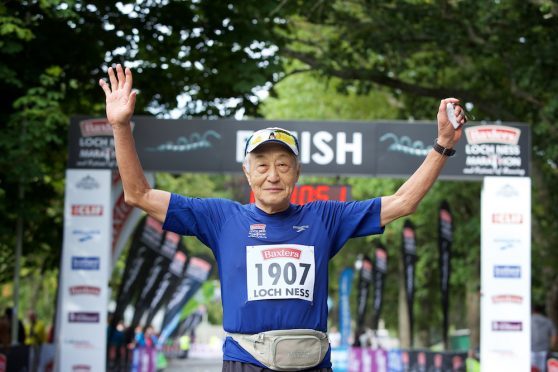They’ve been limbering up for 15 years in preparation for running their dream marathon around Loch Ness.
And finally, this September, a group of 21 Japanese pensioners from a “legendary” running club have found the time to take part in the event now that everyone has retired.
The athletes are from the Tokyo-based Full Hyaku Club – which translates as “to run a marathon 100 times or more, and to do so happily” – and all 400 members must have run at least 100 marathons.
The oldest member of the contingent is 80-year-old Shigeru Asano, while Hitoshi Ishimori is the youngest in the group at the tender age of 61.
Club member Tsutomu Kaji said his team mates “can not wait” to participate, adding: “They first heard about the Loch Ness Marathon 15 years ago trough a Japanese marathon magazine and they really wanted to go. But they were all working and just didn’t have the time to travel such a distance.
“Now they are all retired so they all have time to run. They have waited so long to be able to take part, and they are very excited. They are so looking forward to arriving in Scotland and seeing Loch Ness.”
Distance running took off in Japan post World War II – decades before other nations caught on – during the nation’s rebuilding process.
It was commonplace for companies to set up running teams to raise morale among their workforce, and as many running events were sponsored by newspapers, it resulted in huge amounts of coverage which captured the public’s imagination.
Kenya and Ethiopia are now considered home to some of the world’s best marathon runners, but Japan produced many world class athletes and dominated during the 60s and 70s.
However, even in a nation obsessed with distance running, members of the Full Hyaku Club are considered to be legendary.
Mr Kaji added: “I am sure to have so many older marathon runners will be unusual at the Loch Ness Marathon, but even here in Japan the club is out of the ordinary”.
Race director Malcolm Sutherland said: “We have had one or two runners from Japan over the years – last year we welcomed 81-year-old Koichi Kitabake – but this is by far the biggest group that we have seen.
“The club has an incredible pedigree – they are clearly very passionate about running – and we are honoured that they have kept the Loch Ness Marathon in mind after all these years.”
